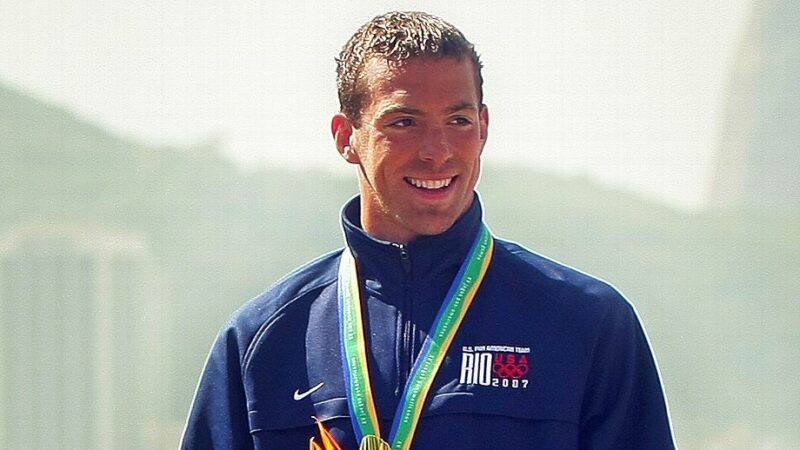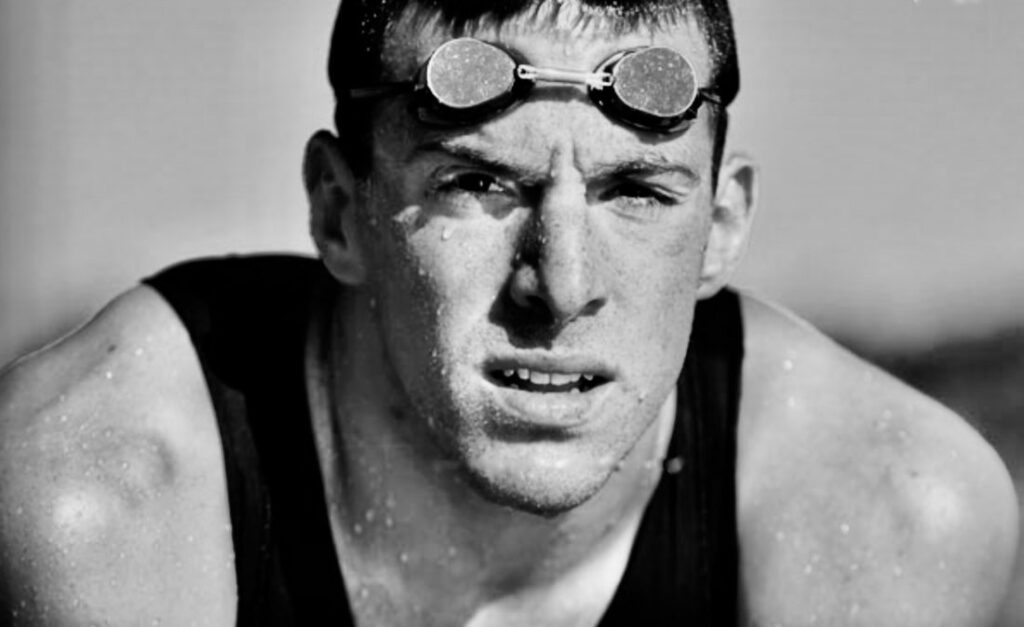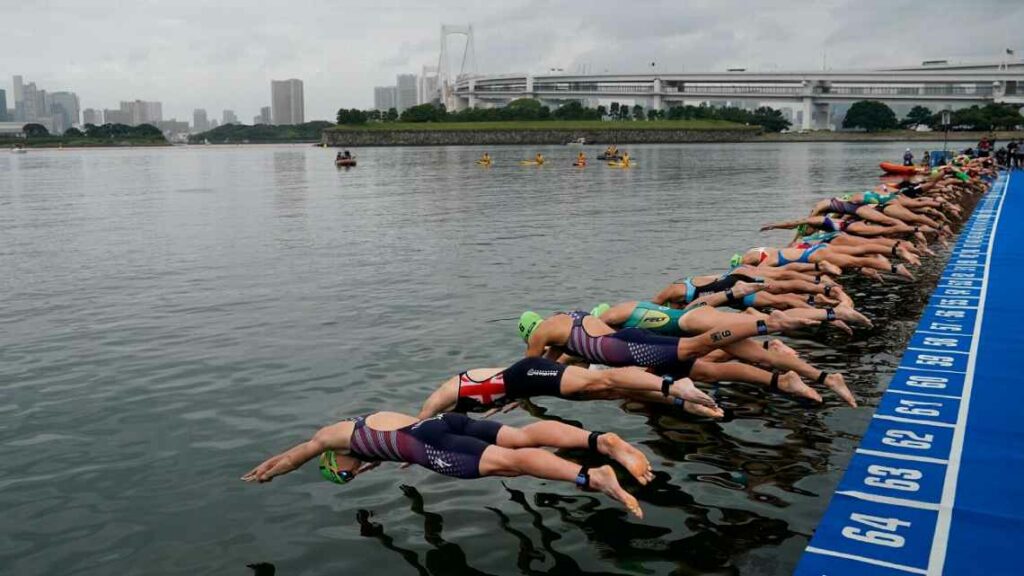Today, on Fran Crippen’s birthday, almost 13 years later, what we have learned from his avoidable death: LET US NEVER FORGET

Story copied from ESPN.com / by: Bonnie D. Ford / first published 10/23/2020
Everyone who knew Fran Crippen remembers where they were when they heard. Word traveled swiftly from Fujairah in the United Arab Emirates on Oct. 23, 2010, and it traveled widely. Fran’s personal reach, like his wingspan in the water, was considerable. Sorrow rippled out from his hometown of Conshohocken, Pennsylvania, his alma mater, the University of Virginia, and his onetime training base of Mission Viejo, California, and washed over hundreds of athletes and coaches he got to know through national and international competition.
I also remember where I was — alone, driving on a pristine fall day, admiring the brilliant color of the trees flowing by. I stopped, for some reason that escapes me, and looked at my phone.
The news was incomprehensible. Elite swimmers didn’t just drown. They didn’t slip away unseen in a race, with dozens of people around them — fellow competitors, officials, volunteers — on the course. Did they? Fran was 26, a sculpted athlete in his prime.

I called my editor. “There’s something not right here,” I said.
Fran Crippen and I never met. I began to tell his story only after his death. And yet Fran influenced me as a journalist as much or more as any athlete I’ve ever covered, leading me down paths that were both dark and inspiring. He was that compelling of a person. Still is.
There are stories you do out of obligation, and stories you pursue out of passion, and then there are a handful of stories over a career that take you by the shoulders and propel you with no clear idea of where you’re going — and don’t allow you to quit. Fran’s story was all three of those for me.
I’d covered Olympic-level swimming for many years, but back then, I knew next to nothing about Fran’s discipline of marathon, or open-water swimming. Gifted, charismatic and generous, Fran was poised to put his niche sport on the map in the United States. The 10-kilometer event had been elevated to Olympic status in time for the 2008 Beijing Games. Fran won a bronze medal at the world championships the following year and took aim at the 2012 Summer Games in London. The Fujairah event was part of the 10K Grand Prix series that offered one of the only opportunities to compete against other top open-water athletes.
EDITOR’S PICKS
In the days after his death I spent time at Germantown Academy in suburban Philadelphia, where Fran and his three sisters had all excelled in the pool. The oldest, Maddy, had world-class talent and made an Olympic final in 2000. She raced to her parents’ home in the early-morning hours of Oct. 23 so they wouldn’t be alone. She also acted as the family spokesperson in the immediate aftermath, and met with me in a downtown coffee shop, where I marveled at her fierce composure.

I tracked down other swimmers who had been in the race. They described a nonexistent safety net on a day when the water and ambient air temperature were both dangerously hot, a potentially lethal combination for swimmers churning at race pace for two hours or more. Bravely, with controlled anger and resolve, his U.S. teammate Alex Meyer took me through the day minute-by-minute and made me feel the horror of seeing his friend’s lifeless body recovered after an inexcusably delayed search.
The tragedy became the subject of two investigations, an independent probe commissioned by USA Swimming and a separate one by FINA, swimming’s international governing body. Both concluded that Fran died because of a confluence of factors, extreme heat and organizer negligence being primary among them.
Inexplicably, there was no upper temperature ceiling in place for events at the time. There is now, but the standard (31 degrees Celsius, or 87.8 degrees Fahrenheit) is still vulnerable to manipulation by officials who measure it two hours before the start time and are often reluctant to call a halt to racing.

In more than one major event in recent years, the onus has fallen on swimmers to withdraw when they feel conditions are unsafe, rather than having organizers make the right decision. The issue arose again at the August 2019 Olympic 10K test event in Tokyo Bay.
Fran’s mother, Pat Crippen, put it better than I ever could in an email to me this week:
“While considerable progress has been made since 10/23/10 and I am very grateful for that, I wish I could say Fran’s death has changed the course of OW swimming with total focus on the safety of the athlete, but when I hear of races still being held under questionable conditions, when I hear it’s up to swimmers to pull out of races because of unacceptable conditions, I am disheartened.”
What Fran’s death did make immutable was the presence of adequate safety personnel on the course — or in the sport’s shorthand, “eyes on swimmers.” There’s no way to eliminate risk from a sport where dozens of variables can come into play on any given day, or predict when an athlete might become ill or suffer a serious cardiac or respiratory problem. Getting to swimmers within seconds of the first sign of trouble is crucial. The typical field in an elite open-water race is small enough to keep eyes on every athlete.
As I reported on those investigations and reform efforts throughout 2011 and the lead-up to London 2012, I kept stumbling across reports of amateur triathletes dying in the swim portion of events. That, too, brought me up short — why were fatalities happening at the beginning of an endurance event, rather than the end?
The knowledge and conviction I had developed in covering Fran’s story led me to do a yearlong investigation of those deaths, compiling my own database and doing dozens of interviews. I felt driven by Fran’s memory the entire time, and for that, I feel indebted. I hope my work had a lasting effect on how the industry approaches water safety and how participants prepare for events.
“Sometimes lack of oversight can endanger grown athletes as well, as it did in the completely avoidable tragedy in Fujairah 10 years ago, where 50 swimmers survived conditions unsuitable for racing, and one did not.”Bonnie D. Ford
Fran’s story taught me to be even more vigilant and professionally skeptical about the relationship of Olympic sport federations and athletes, and not to take for granted that leaders in those sports always act in the athletes’ best interests. I used to presume that officials would adhere to a basic duty of care, if only to protect themselves. I was wrong.
When a sport is included in the Olympics, it dramatically ups the stakes and desire for young men and women who will single-mindedly chase glory, sometimes at their own peril. The message in many sports boils down to: Trust us with your kids. We’ll take care of them. But sports entities don’t always hold up their end of the bargain. We’ve seen that play out in an extreme way in sexual abuse cases in youth sports, where the power imbalance is stark. But sometimes lack of oversight can endanger grown athletes as well, as it did in the completely avoidable tragedy in Fujairah 10 years ago, where 50 swimmers survived slipshod organization and conditions unsuitable for racing, and one did not.
The day of Fran’s funeral, people who had loved and admired him went to pools, lakes and shorelines wherever they were and cast flowers on the water. Currents carried the blossoms away, but Fran has stayed present for many. This week, I received a message — unsolicited — from Belgian swimmer Brian Ryckeman, who finished third in the race where Fran perished.
“Fran was a big inspiration to me and had a big impact on my swimming career and still in my life. Even after 10 years I still think about him very often. And I hope swimmers from this generation will hear all about his story and his life. I’m the father now of a beautiful daughter. Fran and I have the same age. I was talking to my wife last week, we wondered how his life would have been. I think it’s important for all of us, and for the sport, that we learn from this. I’m coaching now and all my kids, age 8 to 20, know about this story.”
Fran was not the only member of his family imbued with staying power. The Crippens have continued their dignified, classy, and very real journey without their beloved son and brother mainly in private. But they also established a foundation in his name — the Fran Crippen Elevation Foundation — that advocates for water safety and awards grants to athletes who channel his spirit.
His mother, Pat, personally reads the grant applications. This is what she wrote me about the essay authors:
“It’s clear to me that while they did not know Fran personally, they know his story and not just about his tragic death. They wrote about his resilience, his focus, his hard work and determination. This I find heartwarming and mostly what I want them to remember about Fran. I know for certain that Fran would say this is his legacy.”
Through her eyes and those of so many others, I humbly agree.
